Sarah L. Johnson's Blog, page 8
September 19, 2024
Marianne K. Miller's cinematic novel evokes a young Hemingway's pivotal time in Toronto
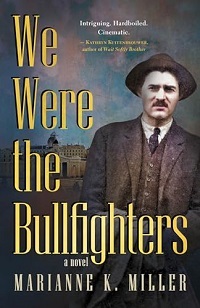 In her leanly written debut, Miller dramatizes the pivotal months Ernest Hemingway spent in Canada as a reporter for the Toronto Star, imagining how he develops an affinity and quiet admiration for an infamous bank robber, Norman “Red” Ryan, who’s on the lam after a daring prison break from the Kingston Pen.
In her leanly written debut, Miller dramatizes the pivotal months Ernest Hemingway spent in Canada as a reporter for the Toronto Star, imagining how he develops an affinity and quiet admiration for an infamous bank robber, Norman “Red” Ryan, who’s on the lam after a daring prison break from the Kingston Pen.In 1923, Hemingway and his wife, Hadley, relocate from Paris to Toronto to await the birth of their first child, a move that encompasses multiple regrets on his part. Feeling trapped into impending fatherhood and in a career with a controlling boss who doesn’t allow him a byline, he gets frustratingly bogged down with routine assignments and nonstop travel when he’d much rather be investigating Red’s more exciting trail and developing his own fiction-writing craft.
For his part, Red, reveling in his liberty, makes his way from the piney woods near Toronto to various points across the northern United States, holding up banks and accumulating enough wealth to fund an increasingly lavish lifestyle. The leader of his band of outlaws, Red aims to keep their goal focused while his most loyal sidekick, Arthur “Sully” Sullivan, gets distracted by pretty ladies.
Miller’s writing effectively combines the flawed heroes and unsentimental settings of hard-boiled crime fiction with an economical style that creates bold, memorable images of both men and their parallel journeys. Hemingway follows Red’s exploits from afar, researching the background to his case with a librarian’s invaluable help while growing confident in his pursuit of creative freedom whenever his path and Red’s unexpectedly cross.
With slangy dialogue and vivid scenes of the raucous 1920s that pop from the page, We Were the Bullfighters makes for a stirring portrait of a young man’s incessant hunger to fulfill his artistic vision.
Marianne K. Miller's We Were the Bullfighters was published by Dundurn Press, itself based in Toronto, this past May. I reviewed it from NetGalley for August's Historical Novels Review. Before reading the novel's synopsis, I hadn't been aware of Hemingway's time in Canada, and the circumstances are so intriguing it's not surprising an author decided to make a novel out of it. Miller is a Hemingway scholar to boot. Her novel should appeal to readers who enjoy hard-boiled crime, those who read literary fiction, and anyone interested in this significant period of a major American writer's life.
Published on September 19, 2024 16:29
September 14, 2024
A cornucopia of historical fiction reads for fall 2024, all set before the 19th century
For those seeking to spend the next few months immersed in earlier corners of the past, here are fourteen new and upcoming reads, from publishers large and small.
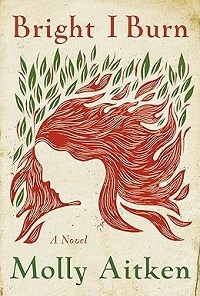
Alice Kyteler, a businesswoman in 13th-century Ireland with an eye-opening marital history, attracts attention of the wrong sort and is eventually accused of witchcraft. But this novel is primarily a portrait of her earlier life as an ambitious woman in a patriarchal world. Viking, Aug. 2024.
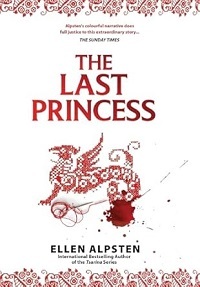 The author of Tsarina and The Tsarina's Daughter returns with the story of Gytha Godwinson, daughter of England's Harold II, whose life takes dramatic turns after her family's loss during the Battle of Hastings in 1066. Independently published, Nov. 2024.
The author of Tsarina and The Tsarina's Daughter returns with the story of Gytha Godwinson, daughter of England's Harold II, whose life takes dramatic turns after her family's loss during the Battle of Hastings in 1066. Independently published, Nov. 2024.
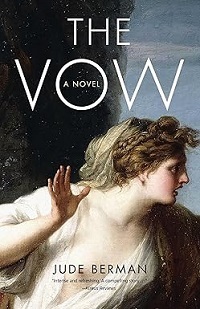 Berman adds to the popular theme of art-focused historical fiction with a biographical novel about Angelica Kauffman, Neoclassical artist in 18th-century Italy and London. She Writes, Oct. 2024.
Berman adds to the popular theme of art-focused historical fiction with a biographical novel about Angelica Kauffman, Neoclassical artist in 18th-century Italy and London. She Writes, Oct. 2024.
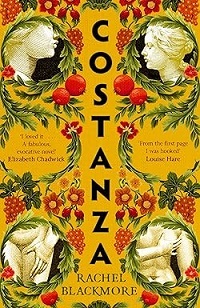
Costanza Piccolomini, a young wife in 1630s Rome, becomes entranced with celebrity sculptor Gian Lorenzo Bernini, which leads to undesired fame and a terrible act. Renegade Books, Aug. 2024.
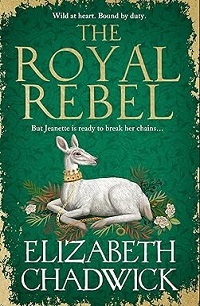
Jeanette of Kent, English royal cousin, enters into a clandestine marriage with the knight she loves during the Hundred Years' War, but political and family pressures conspire against them. Sphere, Sept. 2024.
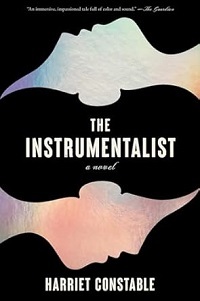 The orphaned Anna Maria della Pietà, the most gifted pupil of Antonio Vivaldi, stops at nothing to achieve her career goals in 18th-century Venice. Simon & Schuster US/Bloomsbury UK, Sept. 2024.
The orphaned Anna Maria della Pietà, the most gifted pupil of Antonio Vivaldi, stops at nothing to achieve her career goals in 18th-century Venice. Simon & Schuster US/Bloomsbury UK, Sept. 2024.
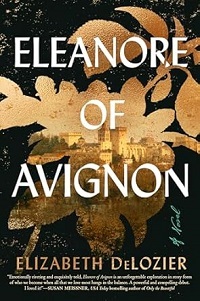
A gifted young healer strives to balance her competing desires after the Black Death lands in Avignon, in 14th-century Provence. Dutton, Oct 2024.
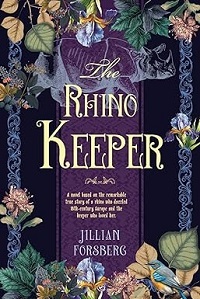
In this dual-period narrative, the author's debut, a modern college student discovers the long-lost history of a rhino named Clara who traveled Europe with her keeper in the 18th century, attracting fascinated crowds as well as danger. History Through Fiction, Oct. 2024.
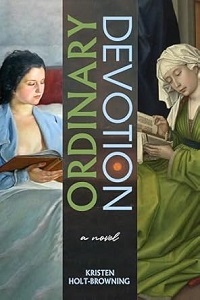 Ordinary Devotion is also a multi-period novel. The story of a twelve-year-old girl walled up with an anchoress in an English abbey intertwines with a modern academic researcher, revealing themes of faith, freedom, and women's agency over their own bodies. Monkfish, Nov. 2024.
Ordinary Devotion is also a multi-period novel. The story of a twelve-year-old girl walled up with an anchoress in an English abbey intertwines with a modern academic researcher, revealing themes of faith, freedom, and women's agency over their own bodies. Monkfish, Nov. 2024.
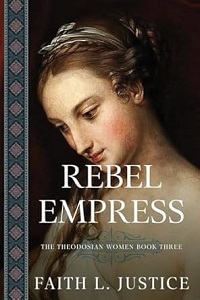 The third in Justice's Theodosian Women series follows a young woman called Athenais, a pagan of Greek heritage, who in an unexpected twist of circumstances comes to marry Theodosius II, emperor of the Eastern Roman Empire. I enjoyed the author's
Dawn Empress
and look forward to this one. Raggedy Moon, Aug. 2024.
The third in Justice's Theodosian Women series follows a young woman called Athenais, a pagan of Greek heritage, who in an unexpected twist of circumstances comes to marry Theodosius II, emperor of the Eastern Roman Empire. I enjoyed the author's
Dawn Empress
and look forward to this one. Raggedy Moon, Aug. 2024.
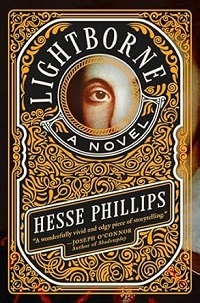
The final days of Christopher Marlowe are depicted as a thriller, as the celebrated Elizabethan-era playwright, an ex-spy with many secrets and enemies, runs up against blackmail and sinister individuals seeking to eliminate him. Pegasus, Oct. 2024.
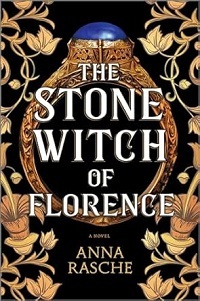 Like Eleanore of Avignon above, Rasche's debut is set during the time of the Black Death, but in Florence, Italy, as a young woman with uncanny healing talents is called to help the populace. Park Row, Oct. 2024.
Like Eleanore of Avignon above, Rasche's debut is set during the time of the Black Death, but in Florence, Italy, as a young woman with uncanny healing talents is called to help the populace. Park Row, Oct. 2024.
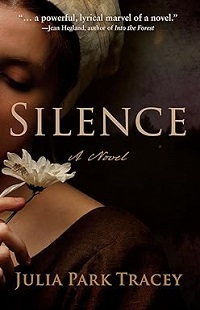 Author Tracey writes her second historical novel about one of her ancestors from colonial Massachusetts. Silence Marsh, a woman in mourning who's forced into silence for blasphemy in her Puritan community, is then asked to testify in a witchcraft trial. Sibylline, Oct. 2024.
Author Tracey writes her second historical novel about one of her ancestors from colonial Massachusetts. Silence Marsh, a woman in mourning who's forced into silence for blasphemy in her Puritan community, is then asked to testify in a witchcraft trial. Sibylline, Oct. 2024.
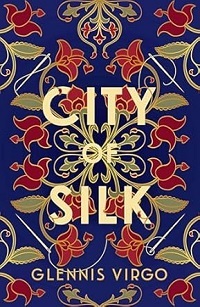 A skilled seamstress in 16th-century Bologna who dreams of being a tailor, a trade forbidden to women, runs into numerous roadblocks. The author won the Jenny Brown Associates Debut Writers Over 50 Award in 2023. I would love to read the shortlisted entries too! Allison & Busby, Nov. 2024.
A skilled seamstress in 16th-century Bologna who dreams of being a tailor, a trade forbidden to women, runs into numerous roadblocks. The author won the Jenny Brown Associates Debut Writers Over 50 Award in 2023. I would love to read the shortlisted entries too! Allison & Busby, Nov. 2024.

Alice Kyteler, a businesswoman in 13th-century Ireland with an eye-opening marital history, attracts attention of the wrong sort and is eventually accused of witchcraft. But this novel is primarily a portrait of her earlier life as an ambitious woman in a patriarchal world. Viking, Aug. 2024.
 The author of Tsarina and The Tsarina's Daughter returns with the story of Gytha Godwinson, daughter of England's Harold II, whose life takes dramatic turns after her family's loss during the Battle of Hastings in 1066. Independently published, Nov. 2024.
The author of Tsarina and The Tsarina's Daughter returns with the story of Gytha Godwinson, daughter of England's Harold II, whose life takes dramatic turns after her family's loss during the Battle of Hastings in 1066. Independently published, Nov. 2024.  Berman adds to the popular theme of art-focused historical fiction with a biographical novel about Angelica Kauffman, Neoclassical artist in 18th-century Italy and London. She Writes, Oct. 2024.
Berman adds to the popular theme of art-focused historical fiction with a biographical novel about Angelica Kauffman, Neoclassical artist in 18th-century Italy and London. She Writes, Oct. 2024.
Costanza Piccolomini, a young wife in 1630s Rome, becomes entranced with celebrity sculptor Gian Lorenzo Bernini, which leads to undesired fame and a terrible act. Renegade Books, Aug. 2024.

Jeanette of Kent, English royal cousin, enters into a clandestine marriage with the knight she loves during the Hundred Years' War, but political and family pressures conspire against them. Sphere, Sept. 2024.
 The orphaned Anna Maria della Pietà, the most gifted pupil of Antonio Vivaldi, stops at nothing to achieve her career goals in 18th-century Venice. Simon & Schuster US/Bloomsbury UK, Sept. 2024.
The orphaned Anna Maria della Pietà, the most gifted pupil of Antonio Vivaldi, stops at nothing to achieve her career goals in 18th-century Venice. Simon & Schuster US/Bloomsbury UK, Sept. 2024.
A gifted young healer strives to balance her competing desires after the Black Death lands in Avignon, in 14th-century Provence. Dutton, Oct 2024.

In this dual-period narrative, the author's debut, a modern college student discovers the long-lost history of a rhino named Clara who traveled Europe with her keeper in the 18th century, attracting fascinated crowds as well as danger. History Through Fiction, Oct. 2024.
 Ordinary Devotion is also a multi-period novel. The story of a twelve-year-old girl walled up with an anchoress in an English abbey intertwines with a modern academic researcher, revealing themes of faith, freedom, and women's agency over their own bodies. Monkfish, Nov. 2024.
Ordinary Devotion is also a multi-period novel. The story of a twelve-year-old girl walled up with an anchoress in an English abbey intertwines with a modern academic researcher, revealing themes of faith, freedom, and women's agency over their own bodies. Monkfish, Nov. 2024. The third in Justice's Theodosian Women series follows a young woman called Athenais, a pagan of Greek heritage, who in an unexpected twist of circumstances comes to marry Theodosius II, emperor of the Eastern Roman Empire. I enjoyed the author's
Dawn Empress
and look forward to this one. Raggedy Moon, Aug. 2024.
The third in Justice's Theodosian Women series follows a young woman called Athenais, a pagan of Greek heritage, who in an unexpected twist of circumstances comes to marry Theodosius II, emperor of the Eastern Roman Empire. I enjoyed the author's
Dawn Empress
and look forward to this one. Raggedy Moon, Aug. 2024.
The final days of Christopher Marlowe are depicted as a thriller, as the celebrated Elizabethan-era playwright, an ex-spy with many secrets and enemies, runs up against blackmail and sinister individuals seeking to eliminate him. Pegasus, Oct. 2024.
 Like Eleanore of Avignon above, Rasche's debut is set during the time of the Black Death, but in Florence, Italy, as a young woman with uncanny healing talents is called to help the populace. Park Row, Oct. 2024.
Like Eleanore of Avignon above, Rasche's debut is set during the time of the Black Death, but in Florence, Italy, as a young woman with uncanny healing talents is called to help the populace. Park Row, Oct. 2024. Author Tracey writes her second historical novel about one of her ancestors from colonial Massachusetts. Silence Marsh, a woman in mourning who's forced into silence for blasphemy in her Puritan community, is then asked to testify in a witchcraft trial. Sibylline, Oct. 2024.
Author Tracey writes her second historical novel about one of her ancestors from colonial Massachusetts. Silence Marsh, a woman in mourning who's forced into silence for blasphemy in her Puritan community, is then asked to testify in a witchcraft trial. Sibylline, Oct. 2024. A skilled seamstress in 16th-century Bologna who dreams of being a tailor, a trade forbidden to women, runs into numerous roadblocks. The author won the Jenny Brown Associates Debut Writers Over 50 Award in 2023. I would love to read the shortlisted entries too! Allison & Busby, Nov. 2024.
A skilled seamstress in 16th-century Bologna who dreams of being a tailor, a trade forbidden to women, runs into numerous roadblocks. The author won the Jenny Brown Associates Debut Writers Over 50 Award in 2023. I would love to read the shortlisted entries too! Allison & Busby, Nov. 2024.
Published on September 14, 2024 08:00
September 5, 2024
Galina Vromen's Hill of Secrets shows the human story within Los Alamos, New Mexico, during WWII
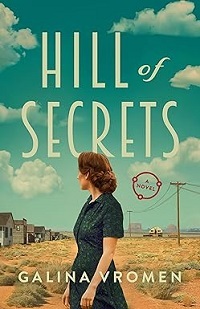 What happens when varied people, all with their own personal troubles, converge in an unfamiliar location for a hidden purpose, especially when the government imposes a frustrating code of silence? In Vromen’s twisty, infectiously readable debut, secrets are simmering within Los Alamos, New Mexico, in 1943, and the Manhattan Project’s development is just one of them.
What happens when varied people, all with their own personal troubles, converge in an unfamiliar location for a hidden purpose, especially when the government imposes a frustrating code of silence? In Vromen’s twisty, infectiously readable debut, secrets are simmering within Los Alamos, New Mexico, in 1943, and the Manhattan Project’s development is just one of them. An art restorer with a chemistry background, Christine Sharp is a trailing spouse who feels sidelined and neglected after relocating to support her PhD scientist husband. Seeking distraction, she befriends 16-year-old ingenue Gertie Koppel, the daughter of German Jewish refugees.
While Gertie’s physicist father, Kurt, loyally serves America in Los Alamos’ Tech Area, his wife Sarah, a movingly three-dimensional character, ruminates on difficult memories.
With young love, a clandestine affair, intense guilt, and suppressed yearnings circulating in this high-pressure environment, the storyline is highly dramatic, and some aspects are far-fetched. Still, the novel offers more than soap opera fare for Oppenheimer fans. By the sobering conclusion, readers will be left pondering the characters’ ethical dilemmas, which defy easy answers.
Hill of Secrets will be published by Amazon Publishing's Lake Union in October. Amazon Prime members can grab it for free on Kindle during September as one of the month's First Reads picks. I wrote this review for Booklist's June 1 issue.
Published on September 05, 2024 16:11
September 1, 2024
Daphne du Maurier's The Glass-Blowers showcases new facets of the French Revolution
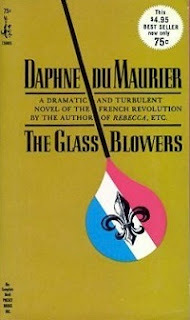 Daphne du Maurier’s The Glass-Blowers is one of her lesser-known historical novels. Having greatly enjoyed Rebecca, Mary Anne, The House on the Strand, and My Cousin Rachel years ago, somehow The Glass-Blowers fell off my radar until I found it again this week: a vintage 1963 paperback with an unassuming cover that represents its subject well.
Daphne du Maurier’s The Glass-Blowers is one of her lesser-known historical novels. Having greatly enjoyed Rebecca, Mary Anne, The House on the Strand, and My Cousin Rachel years ago, somehow The Glass-Blowers fell off my radar until I found it again this week: a vintage 1963 paperback with an unassuming cover that represents its subject well.Set in the Sarthe département of northwestern France, the story follows one family – the author’s paternal ancestors – through the turbulence of the French Revolution and after. Du Maurier acknowledges the help of numerous researchers, and the information must have been fascinating to uncover. So much fiction about this era takes place in Paris that it’s refreshing to envision it from a new viewpoint.
The Bussons are master glass-blowers, a talented, proud, and self-contained community, so much so that when outsider Magdelaine Labbé, a bailiff’s daughter, comes to marry glassmaker Mathurin Busson, she feels like a stranger in a strange land. But Magdelaine is strong and wise, insisting on a place for herself in the firm and raising a large family of five surviving children – each of whose actions during the French Revolution naturally reflect different facets and reactions to ongoing events.
The way Du Maurier frames her novel grabbed me immediately. Aged 80 in 1844, Sophie (Busson) Duval, daughter of Magdelaine, writes a long letter to tell her long-lost nephew the truth about his father, Robert, who was Sophie’s eldest brother. Robert Busson – who later called himself “Busson du Maurier” after the supposed château (really a farmhouse) where he was born – was a carefree dandy who fled France for England during the Revolution to avoid creditors. Robert’s English-born children grew up thinking he had aristocratic origins, and Sophie wants to set the record straight.
As others on Goodreads have pointed out, Du Maurier’s choice of Sophie as narrator has flaws. All her siblings have more striking personalities, and Sophie feels more like a convenient vehicle through which their stories unfold. She speaks fondly of her beloved brother Robert, though we see more of his fecklessness than his supposed charm as he aims high, gambles, and loses again and again. Growing up in a rented château, Robert adores the trappings of wealth and soon latches onto the coattails of the Duc d’Orléans, later Philippe-Égalité. The Glass-Blowers is most powerful when we see firsthand how rumblings from the capital spread throughout the country and catch fire, but weaker when historical facts are presented as reportage: the classic adage of “show, don’t tell.”
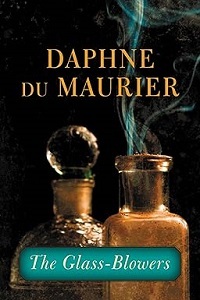 cover of Little, Brown
cover of Little, Brown ebook edition (2013)I especially relished Sophie’s reflections on the seismic changes that ripped society apart: “My brothers, my husband, even Edmé, my little sister, belonged to this moment, had waited for it, even, welcoming change as something they could themselves shape and possess, just as they moulded glass to a new form. What they had been taught as children did not matter any more… Why, then, did I lag behind?” While Sophie supports greater equality, she hates the suffering and unbridled violence perpetrated as if they’re the end goals – including by her own family members.
The story also gets dense in places. While not the masterpiece that some of her other novels have become, The Glass-Blowers remains a valuable read for Du Maurier fans and anyone wanting to see a near-century of French history through a new lens.
Published on September 01, 2024 06:30
August 27, 2024
Circumnavigating Svalbard: My Love Affair with the Arctic, an essay by Cynthia Reeves
Thanks to Cynthia Reeves, author of The Last Whaler (Regal House, Sept. 3), for contributing the following essay about her research. I hope you'll enjoy reading it as much as I did.
~
Circumnavigating Svalbard: My Love Affair with the Arcticby Cynthia Reeves
Imagine this: You land by Zodiac at a remote beach on the southern shore of Van Keulenfjorden in the Svalbard archipelago, the site of an old beluga whaling station called Bamsebu, unprepared for what’s preserved there. Stretching to the horizon are whale bones, piles and piles of bleached beluga bones bearing silent testimony to the slaughter that occurred there in the 1930s. How is it, you wonder, that no one has been moved to incorporate this tableau into a story?
 Piles of Beluga bones (photo by author)
Piles of Beluga bones (photo by author)
I was inspired to write The Last Whaler when I came upon this sight during my 2017 Arctic Circle Summer Solstice residency aboard the barquentine Antigua. Prior to this encounter, my love affair with the Arctic was satisfied only through books, starting in childhood reading tragic tales of doomed Arctic explorers. This early interest later merged with concern for the impact of climate change on the Arctic’s fragile eco-system. Flying over the vast, undulating white terrain leading into Svalbard’s airport at Longyearbyen feels like entering another world—a frozen landscape riven with fissured glaciers spilling down into the ice-pocked waters of the archipelago. That this magnificent spectacle might one day vanish spurred me to commit Svalbard’s beauty to my writings in hopes of helping raising awareness of what could be lost.
 The Last Whaler is the most ambitious of these works. The story centers around Astrid Handeland, a botanist who travels to Svalbard in 1937 with her whaler husband, Tor, hoping the sojourn will enable her to move on from the devastating death of their son Birk and to reconnect with her passion for Arctic flora. Instead, she discovers the reality of the challenges imposed by the unforgiving environment and her growing unease with her husband’s industry harvesting belugas. Ten years on, in the devastating aftermath of World War II, Tor returns to Svalbard to come to terms both with his wife’s death and his role in damaging the abandoned station’s once-pristine shores.
The Last Whaler is the most ambitious of these works. The story centers around Astrid Handeland, a botanist who travels to Svalbard in 1937 with her whaler husband, Tor, hoping the sojourn will enable her to move on from the devastating death of their son Birk and to reconnect with her passion for Arctic flora. Instead, she discovers the reality of the challenges imposed by the unforgiving environment and her growing unease with her husband’s industry harvesting belugas. Ten years on, in the devastating aftermath of World War II, Tor returns to Svalbard to come to terms both with his wife’s death and his role in damaging the abandoned station’s once-pristine shores.
Research shaped The Last Whaler, above all because I had little familiarity with Svalbard and Norwegian history prior to my Arctic Circle expedition. In the two years following the expedition, I spent several months living in Longyearbyen and exploring the surrounding area to gain a sense of the unusual environment, from the days of perpetual sunlight to the nights of utter polar darkness. Aside from allowing me to absorb the physical landscape, these residencies also provided unique historical insights into Svalbard and Norway of the 1930s and 40s. For example, the former art gallery, Galleri Svalbard, housed a library of rare documents—including an original copy of the Norwegian botanist and environmental activist Hanna Resvoll-Holmsen’s Svalbards flora. Also contained in the library were journals, newspaper articles, memoirs, and other documents—often in Norwegian and unavailable elsewhere—that offered background into the lives of those who lived on Svalbard and in Norway during that time. I was especially captivated by the women who survived and even flourished in the Arctic. In addition to Resvoll-Holmsen, the novel features such real-life heroines as Christiane Ritter, whose memoir A Woman in the Polar Night details her year in 1935-36 on Svalbard with her hunter husband, Hermann; and Helfrid Nøis, who spent years carving a life as the “Arctic housewife” of the famous hunter Hilmar Nøis.
Moreover, the history of Norway in World War II required substantial research in order to assess its impact on Tor’s changing views on war, whaling, and women’s roles. Of particular interest were the heroism, and cowardice, exhibited by Norwegians during the war. Remarkable acts of bravery include the almost-mythical journey of Jan Baalsrud, who together with eleven other Resistance fighters sailed from Scotland to Bardufoss in northern Norway to sabotage a German airfield control tower. Baalsrud alone escaped capture and endured a harrowing trek across Norway to freedom in Sweden with the help of sympathetic Norwegians. Conversely, Lebensborn, the Nazi program of using Norwegian women to give birth to “perfect” Aryan children, plays a role in Tor’s life as he tries to protect his teenaged daughter from the predations of Nazi soldiers.
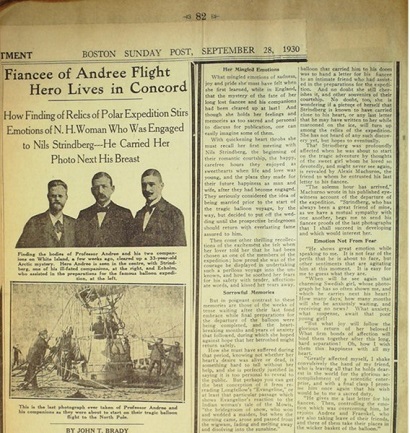 Pages from Charlier scrapbook, v.2t
Pages from Charlier scrapbook, v.2t
The Scott Polar Research Institute in Cambridge, England, was also an invaluable source of Arctic history. There, I scoured rare documents, focusing on the biographies of polar explorers as well as ordinary people whose lives intersected with those more famous. One such story involved Anna Charlier, the fiancée of Nils Strindberg, one of the three occupants of S. A. Andrée’s hot-air balloon during its ill-fated attempt to sail over the North Pole. Quite by chance, I discovered among the artifacts five enormous, leather-bound volumes of newspaper clippings and other mementoes preserved by Charlier from the time of the balloon’s disappearance in 1897 through and after the discovery of the men’s bodies on Kvitøya in 1930. Her obsession culminated in asking her husband to bury her heart next to Strindberg’s grave in Stockholm, a request her husband honored after her death in 1949.
Charlier’s story is not only embedded in The Last Whaler but also the centerpiece of my next project. Again I will travel to Svalbard to circumnavigate the archipelago aboard the 2024 Arctic Circle Summer Alumni Expedition. On this trip—ice conditions permitting—I hope to explore the eastern side of the islands and get a glimpse of Kvitøya, an inhospitable spit of land that does not lend itself to landings. I’m curious about the kinds of obsessions that would drive Andrée and his companions to undertake their courageous (or foolish, depending on whose history you read) journey and that would illuminate Charlier’s eternal passion for Strindberg.
~
 author Cynthia Reeves (credit: 5L Photography)
author Cynthia Reeves (credit: 5L Photography)
Cynthia Reeves is the author of three books of fiction: the novel The Last Whaler (Regal House Publishing, 2024); the novel in stories Falling through the New World (Gold Wake Press, 2024), which was awarded Gold Wake’s Spring 2023 Fiction Prize; and the novella Badlands (Miami University Press, 2007), which won Miami University Press’s Novella Prize. Cynthia’s short stories, poetry, and essays have appeared widely. She has been awarded residencies to the Arctic Circle’s 2017 Summer Solstice and 2024 Alumni Expeditions, Hawthornden Castle, Galleri Svalbard, Art & Science in the Field, and Vermont Studio Center. A graduate of Warren Wilson’s MFA program, she taught in Bryn Mawr College’s Creative Writing Program and Rosemont College’s MFA program as well as at conferences nationwide. She lives with her husband in Camden, Maine. Find out more at her website cynthiareeveswriter.com.
~
Circumnavigating Svalbard: My Love Affair with the Arcticby Cynthia Reeves
Imagine this: You land by Zodiac at a remote beach on the southern shore of Van Keulenfjorden in the Svalbard archipelago, the site of an old beluga whaling station called Bamsebu, unprepared for what’s preserved there. Stretching to the horizon are whale bones, piles and piles of bleached beluga bones bearing silent testimony to the slaughter that occurred there in the 1930s. How is it, you wonder, that no one has been moved to incorporate this tableau into a story?
 Piles of Beluga bones (photo by author)
Piles of Beluga bones (photo by author)I was inspired to write The Last Whaler when I came upon this sight during my 2017 Arctic Circle Summer Solstice residency aboard the barquentine Antigua. Prior to this encounter, my love affair with the Arctic was satisfied only through books, starting in childhood reading tragic tales of doomed Arctic explorers. This early interest later merged with concern for the impact of climate change on the Arctic’s fragile eco-system. Flying over the vast, undulating white terrain leading into Svalbard’s airport at Longyearbyen feels like entering another world—a frozen landscape riven with fissured glaciers spilling down into the ice-pocked waters of the archipelago. That this magnificent spectacle might one day vanish spurred me to commit Svalbard’s beauty to my writings in hopes of helping raising awareness of what could be lost.
 The Last Whaler is the most ambitious of these works. The story centers around Astrid Handeland, a botanist who travels to Svalbard in 1937 with her whaler husband, Tor, hoping the sojourn will enable her to move on from the devastating death of their son Birk and to reconnect with her passion for Arctic flora. Instead, she discovers the reality of the challenges imposed by the unforgiving environment and her growing unease with her husband’s industry harvesting belugas. Ten years on, in the devastating aftermath of World War II, Tor returns to Svalbard to come to terms both with his wife’s death and his role in damaging the abandoned station’s once-pristine shores.
The Last Whaler is the most ambitious of these works. The story centers around Astrid Handeland, a botanist who travels to Svalbard in 1937 with her whaler husband, Tor, hoping the sojourn will enable her to move on from the devastating death of their son Birk and to reconnect with her passion for Arctic flora. Instead, she discovers the reality of the challenges imposed by the unforgiving environment and her growing unease with her husband’s industry harvesting belugas. Ten years on, in the devastating aftermath of World War II, Tor returns to Svalbard to come to terms both with his wife’s death and his role in damaging the abandoned station’s once-pristine shores. Research shaped The Last Whaler, above all because I had little familiarity with Svalbard and Norwegian history prior to my Arctic Circle expedition. In the two years following the expedition, I spent several months living in Longyearbyen and exploring the surrounding area to gain a sense of the unusual environment, from the days of perpetual sunlight to the nights of utter polar darkness. Aside from allowing me to absorb the physical landscape, these residencies also provided unique historical insights into Svalbard and Norway of the 1930s and 40s. For example, the former art gallery, Galleri Svalbard, housed a library of rare documents—including an original copy of the Norwegian botanist and environmental activist Hanna Resvoll-Holmsen’s Svalbards flora. Also contained in the library were journals, newspaper articles, memoirs, and other documents—often in Norwegian and unavailable elsewhere—that offered background into the lives of those who lived on Svalbard and in Norway during that time. I was especially captivated by the women who survived and even flourished in the Arctic. In addition to Resvoll-Holmsen, the novel features such real-life heroines as Christiane Ritter, whose memoir A Woman in the Polar Night details her year in 1935-36 on Svalbard with her hunter husband, Hermann; and Helfrid Nøis, who spent years carving a life as the “Arctic housewife” of the famous hunter Hilmar Nøis.
Moreover, the history of Norway in World War II required substantial research in order to assess its impact on Tor’s changing views on war, whaling, and women’s roles. Of particular interest were the heroism, and cowardice, exhibited by Norwegians during the war. Remarkable acts of bravery include the almost-mythical journey of Jan Baalsrud, who together with eleven other Resistance fighters sailed from Scotland to Bardufoss in northern Norway to sabotage a German airfield control tower. Baalsrud alone escaped capture and endured a harrowing trek across Norway to freedom in Sweden with the help of sympathetic Norwegians. Conversely, Lebensborn, the Nazi program of using Norwegian women to give birth to “perfect” Aryan children, plays a role in Tor’s life as he tries to protect his teenaged daughter from the predations of Nazi soldiers.
 Pages from Charlier scrapbook, v.2t
Pages from Charlier scrapbook, v.2tThe Scott Polar Research Institute in Cambridge, England, was also an invaluable source of Arctic history. There, I scoured rare documents, focusing on the biographies of polar explorers as well as ordinary people whose lives intersected with those more famous. One such story involved Anna Charlier, the fiancée of Nils Strindberg, one of the three occupants of S. A. Andrée’s hot-air balloon during its ill-fated attempt to sail over the North Pole. Quite by chance, I discovered among the artifacts five enormous, leather-bound volumes of newspaper clippings and other mementoes preserved by Charlier from the time of the balloon’s disappearance in 1897 through and after the discovery of the men’s bodies on Kvitøya in 1930. Her obsession culminated in asking her husband to bury her heart next to Strindberg’s grave in Stockholm, a request her husband honored after her death in 1949.
Charlier’s story is not only embedded in The Last Whaler but also the centerpiece of my next project. Again I will travel to Svalbard to circumnavigate the archipelago aboard the 2024 Arctic Circle Summer Alumni Expedition. On this trip—ice conditions permitting—I hope to explore the eastern side of the islands and get a glimpse of Kvitøya, an inhospitable spit of land that does not lend itself to landings. I’m curious about the kinds of obsessions that would drive Andrée and his companions to undertake their courageous (or foolish, depending on whose history you read) journey and that would illuminate Charlier’s eternal passion for Strindberg.
~
 author Cynthia Reeves (credit: 5L Photography)
author Cynthia Reeves (credit: 5L Photography)Cynthia Reeves is the author of three books of fiction: the novel The Last Whaler (Regal House Publishing, 2024); the novel in stories Falling through the New World (Gold Wake Press, 2024), which was awarded Gold Wake’s Spring 2023 Fiction Prize; and the novella Badlands (Miami University Press, 2007), which won Miami University Press’s Novella Prize. Cynthia’s short stories, poetry, and essays have appeared widely. She has been awarded residencies to the Arctic Circle’s 2017 Summer Solstice and 2024 Alumni Expeditions, Hawthornden Castle, Galleri Svalbard, Art & Science in the Field, and Vermont Studio Center. A graduate of Warren Wilson’s MFA program, she taught in Bryn Mawr College’s Creative Writing Program and Rosemont College’s MFA program as well as at conferences nationwide. She lives with her husband in Camden, Maine. Find out more at her website cynthiareeveswriter.com.
Published on August 27, 2024 05:00
August 24, 2024
All the World Beside explores queer history in 1700s Massachusetts
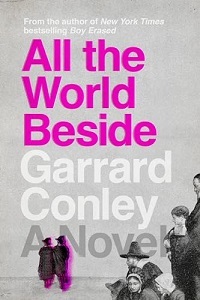 Conley’s debut novel brings us to a small Massachusetts town—the symbolically-named Cana—while dramatizing an affair between two married Puritan men and its fallout.
Conley’s debut novel brings us to a small Massachusetts town—the symbolically-named Cana—while dramatizing an affair between two married Puritan men and its fallout. In 1730, Nathaniel Whitfield is a charismatic minister whose powerful words on the pulpit had brought about a religious awakening and persuaded 200 souls to follow him to a new settlement. Physician Arthur Lyman and his family, recent arrivals from Boston, weren’t part of the original chosen group and are made to feel like continual outsiders. The two men are close friends and something more, which fills Nathaniel with intense guilt, while Arthur finds ways to draw closer to his lover.
Their secret, however, doesn’t remain so. After viewing the pair’s late-night meeting in the forest, in a scene reminiscent of Hawthorne, Nathaniel’s daughter Sarah gets firsthand evidence of problems within her family. Gradually, Nathaniel’s depressive wife Catherine realizes the truth, and so does Arthur’s forthright wife, Anne.
The two families’ unwitting complicity and silence, preferring not to voice a relationship they can hardly explain, ring true for the era. Even more, Nathaniel’s role comes with high expectations for another Christian revival, but his longings for men make him feel completely unworthy.
Conley confidently acknowledges the reality that queer people lived and loved in all past eras, one of his admitted goals, while imbuing his story with considerable depth about how religion can simultaneously exalt and constrain us. Notably, he looks beyond the core relationship to show its repercussions on family members, especially Sarah and her young brother, Ezekiel. (Actually, the later sections focus so much on others that the plot feels a bit diffuse.)
In a particularly intriguing subplot, Sarah gets held back by her gender after discovering a surprising talent. This novel has a lot going on, and it mostly works, all evoked in thoughtful language bordering on mystical at times.
All the World Beside was published by Riverhead in March; I reviewed it for August's Historical Novels Review. The author's first book, Boy Erased, was a memoir recounting his life with a fundamentalist Christian family that pressured him to enroll in gay conversion therapy.
Published on August 24, 2024 06:30
August 18, 2024
Short takes on three female-centered historical novels I haven't reviewed here before
I managed to get in some good reading this summer! Here are short takes on three novels I definitely recommend.
 Kate Grenville’s Restless Dolly Maunder fictionalizes the life story of her grandmother, born in 1881 in rural New South Wales, Australia. She depicts Dolly as a complicated woman who endured disappointments and crushed ambitions but rose to make a financial success of her life – yet whose experiences hardened her character. Dolly’s daughter and granddaughter found her cold and domineering, and yet she broke open new paths for them with her persistence and drive. By the end, you may find Dolly’s personality difficult to like, but what she accomplishes with her life is undeniably admirable. It’s an insightful character portrait, told matter-of-factly and with clear-eyed understanding. Published in the US and UK by Canongate, Restless Dolly Maunder was shortlisted for the 2024 Women's Prize for Fiction. I read it from a Libby copy.
Kate Grenville’s Restless Dolly Maunder fictionalizes the life story of her grandmother, born in 1881 in rural New South Wales, Australia. She depicts Dolly as a complicated woman who endured disappointments and crushed ambitions but rose to make a financial success of her life – yet whose experiences hardened her character. Dolly’s daughter and granddaughter found her cold and domineering, and yet she broke open new paths for them with her persistence and drive. By the end, you may find Dolly’s personality difficult to like, but what she accomplishes with her life is undeniably admirable. It’s an insightful character portrait, told matter-of-factly and with clear-eyed understanding. Published in the US and UK by Canongate, Restless Dolly Maunder was shortlisted for the 2024 Women's Prize for Fiction. I read it from a Libby copy.
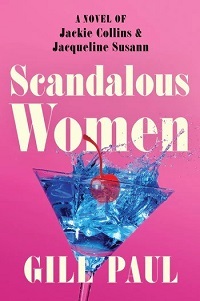 I found Gill Paul’s Scandalous Women irresistibly dishy from start to finish as it depicted the public lives and private worries of Jacqueline Susann and Jackie Collins, who steamed up the bestseller lists with their bold, unabashedly sexy, female-centered novels. They received backlash (and worse) from snooty, chauvinistic book critics and feminists alike but sold millions while opening doors for other female authors. Their journeys to success are fascinating, and I especially loved the insider scoop on the state of publishing in the 1960s and ‘70s. Paul intertwines their stories by seamlessly slipping in a fictional character, Nancy White, a recent college grad seeking entrée into the competitive, highly sexist New York publishing industry. Nancy’s story from naïve hopeful to groundbreaking feminist editor more than holds its own in this hugely entertaining tale about women’s empowerment, the supportive friends (male and female) that nurture them, and the importance of great storytelling. Scandalous Women was published last week by William Morrow, and I read it from a personal copy.
I found Gill Paul’s Scandalous Women irresistibly dishy from start to finish as it depicted the public lives and private worries of Jacqueline Susann and Jackie Collins, who steamed up the bestseller lists with their bold, unabashedly sexy, female-centered novels. They received backlash (and worse) from snooty, chauvinistic book critics and feminists alike but sold millions while opening doors for other female authors. Their journeys to success are fascinating, and I especially loved the insider scoop on the state of publishing in the 1960s and ‘70s. Paul intertwines their stories by seamlessly slipping in a fictional character, Nancy White, a recent college grad seeking entrée into the competitive, highly sexist New York publishing industry. Nancy’s story from naïve hopeful to groundbreaking feminist editor more than holds its own in this hugely entertaining tale about women’s empowerment, the supportive friends (male and female) that nurture them, and the importance of great storytelling. Scandalous Women was published last week by William Morrow, and I read it from a personal copy.
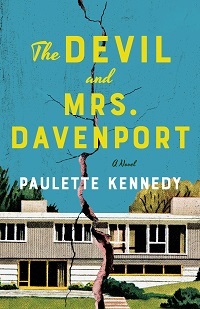 Continuing with the theme of women struggling against the repressive patriarchy, we have Paulette Kennedy’s The Devil and Mrs. Davenport, in which a housewife and mother in small-town Missouri in 1955 begins seeing visions and hearing voices from the beyond. I'd thought the author's first novel,
Parting the Veil
, was very good, and this one is even better. While unnerved by her sudden paranormal talents, Loretta Davenport hopes to use them for good when she gets glimpses of a female murder victim’s final moments. But her husband Pete, a minister and professor at a local Christian university, is horrified and embarrassed, believing she’s delusional and that her behavior will derail his tenure pursuit. The combination of marital conflict, crime thriller, and paranormal mystery brings out the best of the author’s talents in character development and plotting. The more Loretta pursues answers, turning to a caring parapsychologist for help and understanding, the more controlling Pete becomes. The novel feels accurate in in its quaint mid-century household details, yet the overriding theme makes it clear that this era isn’t one that women should look back on with nostalgia. The Devil and Mrs. Davenport was published earlier this year by Lake Union, and I'd purchased a copy on Kindle.
Continuing with the theme of women struggling against the repressive patriarchy, we have Paulette Kennedy’s The Devil and Mrs. Davenport, in which a housewife and mother in small-town Missouri in 1955 begins seeing visions and hearing voices from the beyond. I'd thought the author's first novel,
Parting the Veil
, was very good, and this one is even better. While unnerved by her sudden paranormal talents, Loretta Davenport hopes to use them for good when she gets glimpses of a female murder victim’s final moments. But her husband Pete, a minister and professor at a local Christian university, is horrified and embarrassed, believing she’s delusional and that her behavior will derail his tenure pursuit. The combination of marital conflict, crime thriller, and paranormal mystery brings out the best of the author’s talents in character development and plotting. The more Loretta pursues answers, turning to a caring parapsychologist for help and understanding, the more controlling Pete becomes. The novel feels accurate in in its quaint mid-century household details, yet the overriding theme makes it clear that this era isn’t one that women should look back on with nostalgia. The Devil and Mrs. Davenport was published earlier this year by Lake Union, and I'd purchased a copy on Kindle.
 Kate Grenville’s Restless Dolly Maunder fictionalizes the life story of her grandmother, born in 1881 in rural New South Wales, Australia. She depicts Dolly as a complicated woman who endured disappointments and crushed ambitions but rose to make a financial success of her life – yet whose experiences hardened her character. Dolly’s daughter and granddaughter found her cold and domineering, and yet she broke open new paths for them with her persistence and drive. By the end, you may find Dolly’s personality difficult to like, but what she accomplishes with her life is undeniably admirable. It’s an insightful character portrait, told matter-of-factly and with clear-eyed understanding. Published in the US and UK by Canongate, Restless Dolly Maunder was shortlisted for the 2024 Women's Prize for Fiction. I read it from a Libby copy.
Kate Grenville’s Restless Dolly Maunder fictionalizes the life story of her grandmother, born in 1881 in rural New South Wales, Australia. She depicts Dolly as a complicated woman who endured disappointments and crushed ambitions but rose to make a financial success of her life – yet whose experiences hardened her character. Dolly’s daughter and granddaughter found her cold and domineering, and yet she broke open new paths for them with her persistence and drive. By the end, you may find Dolly’s personality difficult to like, but what she accomplishes with her life is undeniably admirable. It’s an insightful character portrait, told matter-of-factly and with clear-eyed understanding. Published in the US and UK by Canongate, Restless Dolly Maunder was shortlisted for the 2024 Women's Prize for Fiction. I read it from a Libby copy. I found Gill Paul’s Scandalous Women irresistibly dishy from start to finish as it depicted the public lives and private worries of Jacqueline Susann and Jackie Collins, who steamed up the bestseller lists with their bold, unabashedly sexy, female-centered novels. They received backlash (and worse) from snooty, chauvinistic book critics and feminists alike but sold millions while opening doors for other female authors. Their journeys to success are fascinating, and I especially loved the insider scoop on the state of publishing in the 1960s and ‘70s. Paul intertwines their stories by seamlessly slipping in a fictional character, Nancy White, a recent college grad seeking entrée into the competitive, highly sexist New York publishing industry. Nancy’s story from naïve hopeful to groundbreaking feminist editor more than holds its own in this hugely entertaining tale about women’s empowerment, the supportive friends (male and female) that nurture them, and the importance of great storytelling. Scandalous Women was published last week by William Morrow, and I read it from a personal copy.
I found Gill Paul’s Scandalous Women irresistibly dishy from start to finish as it depicted the public lives and private worries of Jacqueline Susann and Jackie Collins, who steamed up the bestseller lists with their bold, unabashedly sexy, female-centered novels. They received backlash (and worse) from snooty, chauvinistic book critics and feminists alike but sold millions while opening doors for other female authors. Their journeys to success are fascinating, and I especially loved the insider scoop on the state of publishing in the 1960s and ‘70s. Paul intertwines their stories by seamlessly slipping in a fictional character, Nancy White, a recent college grad seeking entrée into the competitive, highly sexist New York publishing industry. Nancy’s story from naïve hopeful to groundbreaking feminist editor more than holds its own in this hugely entertaining tale about women’s empowerment, the supportive friends (male and female) that nurture them, and the importance of great storytelling. Scandalous Women was published last week by William Morrow, and I read it from a personal copy. Continuing with the theme of women struggling against the repressive patriarchy, we have Paulette Kennedy’s The Devil and Mrs. Davenport, in which a housewife and mother in small-town Missouri in 1955 begins seeing visions and hearing voices from the beyond. I'd thought the author's first novel,
Parting the Veil
, was very good, and this one is even better. While unnerved by her sudden paranormal talents, Loretta Davenport hopes to use them for good when she gets glimpses of a female murder victim’s final moments. But her husband Pete, a minister and professor at a local Christian university, is horrified and embarrassed, believing she’s delusional and that her behavior will derail his tenure pursuit. The combination of marital conflict, crime thriller, and paranormal mystery brings out the best of the author’s talents in character development and plotting. The more Loretta pursues answers, turning to a caring parapsychologist for help and understanding, the more controlling Pete becomes. The novel feels accurate in in its quaint mid-century household details, yet the overriding theme makes it clear that this era isn’t one that women should look back on with nostalgia. The Devil and Mrs. Davenport was published earlier this year by Lake Union, and I'd purchased a copy on Kindle.
Continuing with the theme of women struggling against the repressive patriarchy, we have Paulette Kennedy’s The Devil and Mrs. Davenport, in which a housewife and mother in small-town Missouri in 1955 begins seeing visions and hearing voices from the beyond. I'd thought the author's first novel,
Parting the Veil
, was very good, and this one is even better. While unnerved by her sudden paranormal talents, Loretta Davenport hopes to use them for good when she gets glimpses of a female murder victim’s final moments. But her husband Pete, a minister and professor at a local Christian university, is horrified and embarrassed, believing she’s delusional and that her behavior will derail his tenure pursuit. The combination of marital conflict, crime thriller, and paranormal mystery brings out the best of the author’s talents in character development and plotting. The more Loretta pursues answers, turning to a caring parapsychologist for help and understanding, the more controlling Pete becomes. The novel feels accurate in in its quaint mid-century household details, yet the overriding theme makes it clear that this era isn’t one that women should look back on with nostalgia. The Devil and Mrs. Davenport was published earlier this year by Lake Union, and I'd purchased a copy on Kindle.
Published on August 18, 2024 08:13
August 11, 2024
A royal visit to 1922 Bangalore brings danger in Harini Nagendra's A Nest of Vipers
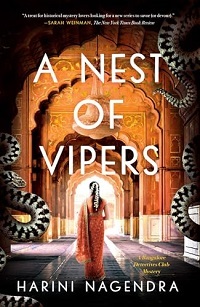 Offering an even twistier and broader-scope plot than the first two books in Nagendra’s series, A Nest of Vipers is dominated by the Prince of Wales’s impending visit to Bangalore in January 1922, and the British colonial government’s determination to quell potential violence by supporters of the Indian independence movement.
Offering an even twistier and broader-scope plot than the first two books in Nagendra’s series, A Nest of Vipers is dominated by the Prince of Wales’s impending visit to Bangalore in January 1922, and the British colonial government’s determination to quell potential violence by supporters of the Indian independence movement. For the moment, Kaveri Murthy and her doctor husband, Ramu, plan to enjoy a VIP evening out at the circus with their friend Anandi to celebrate Kaveri’s matriculation certificate in mathematics. But events take several unusual turns.
After their backstage invitation from master magician Das and his teenage son, Suman, who are eager to meet the famous “lady detective,” Kaveri grows startled at reports of local burglaries. The magician’s act is high-risk even without its underlying message of freedom from British oppression, and ultimately his performance erupts into chaos. When Das vanishes, and Anandi’s abusive estranged husband is found stabbed, the couple know they must protect her, since she’s bound to be accused of his murder.
The dynamics in this volume are changing in intriguing ways, which distress Kaveri to no end. Her policeman ally, Mr. Ismail, has turned cold, telling her to back off the case, and Anandi also asks to be left alone.
With her firm moral compass, Kaveri pushes ahead anyway, despite the pain of going against her friends’ wishes. Her desire for a purpose in life feels very relatable. Ramu supports her implicitly, but as a woman in British India, her academic studies can only progress so far, and she’s not content to sit at home.
Besides the incisive character portraits, we have a complicated mystery grounded in its milieu, in which Indians wanting to escape colonial rule are divided on how best to achieve their goal: ahimsa (nonviolence) or brutal force. Definitely recommended, though start with book one (The Bangalore Detectives Club) for maximum appreciation.
A Nest of Vipers was published by Pegasus Crime in May, and I'd reviewed it for May's Historical Novels Review initially. Constable published it in the UK and in India. See also reviews of the first and second books: The Bangalore Detectives Club and Murder Under a Red Moon .
Published on August 11, 2024 07:18
August 4, 2024
Scandinavian gothic has a feminine focus in Anna Noyes' The Blue Maiden
 For the residents of Sweden’s Berggrund Island in 1825, the Blue Maiden is a fearful place. An uninhabited neighboring isle, its appearance shifts in dense fog and in morning light, showing itself changeable and untrustworthy—as typical of women, in their view.
For the residents of Sweden’s Berggrund Island in 1825, the Blue Maiden is a fearful place. An uninhabited neighboring isle, its appearance shifts in dense fog and in morning light, showing itself changeable and untrustworthy—as typical of women, in their view. The island’s perceived gender is no coincidence. It’s rumored that witches fly to a secret realm there, called Blockula, to conduct dark Sabbaths. Five generations earlier, over two dozen women were put to death by Berggrund’s men for purported witchcraft, an event that lingers in everyone’s minds, especially anyone born female.
Noyes’ bleak and poetic novel ripples throughout with this atmosphere of internalized misogyny. It’s a difficult environment for two motherless girls to grow up in. Beata and Ulrika are daughters of the island’s priest, misfits in this isolated place; their 17th-century ancestor was an accused witch who was only saved from burning due to her pregnancy. With only the village healer willing to speak of their late mother—the beautiful but mysterious Angelique, who died at Bea’s birth—the sisters grow obsessed with learning more about her.
Over time, the young women’s contrasting personalities become apparent. When a middle-aged mainlander arrives on the island to take up an inherited property, long-suppressed truths about the sisters’ family begin spilling out.
The Blue Maiden takes time to catch hold; Bea and Ulrika, although sympathetic due to their outcast status, are kept at an emotional distance. Bea proves to be the protagonist, but this doesn’t become obvious until past the midway point.
Those with an aversion to literary fiction should probably steer clear, but the beautifully described island scenery and rural customs have a compelling draw, combined with the women’s struggle to liberate themselves from patriarchal prejudice. The ultimate reveal is a shocking surprise that will reward patient readers of this moody Scandinavian gothic.
The Blue Maiden by Anna Noyes appeared from Grove Press in May; thanks to the publisher for approving my NetGalley access for review purposes in the Historical Novels Review.
Published on August 04, 2024 05:00
July 26, 2024
A visual preview of the winter 2025 season in historical fiction
For this post, I'm looking way ahead to see what's on the horizon for historical fiction this coming winter. These dozen books have publication dates in the US between January and March 2025. I may yet do a different post with autumn 2024 releases, but advance publicity for fiction seems to be starting earlier and earlier, and there are so many intriguing-sounding titles here, so let's go...
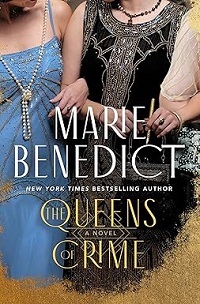
Five female crime writers unite to (guess what?) solve a challenging murder. You'll recognize the names of these now-famous Golden Age mystery novelists; reportedly this story was inspired by an incident in Dorothy Sayers' life. St. Martin's, January 2025.
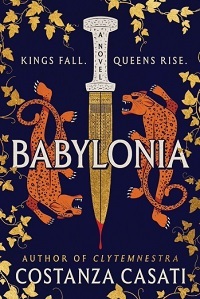
To say I've been anticipating this one is an understatement! It also has a terrific tagline. Casati's second novel focuses on Semiramis, reigning queen in ancient Assyria, and her unlikely rise to power. The interest in mythological retellings seems to be encouraging additional novels set in the distant past, which is welcome news. Sourcebooks, January 2025.
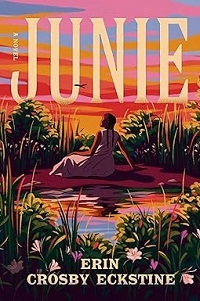
Drastic changes on an Alabama plantation in the pre-Civil War years summon the appearance of the ghost of a young enslaved woman's older sister. Speculative historical fiction with themes of freedom, coming of age, and unexpected romance. Ballantine, February 2025.
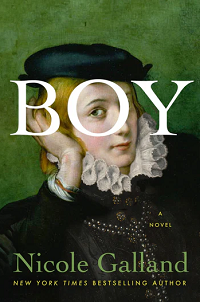
Nicole Galland's latest takes inspiration from a historical figure, Alexander Cooke, who was a "boy player" of female roles in Shakespearean London, intertwining his story with an intellectual female friend of his, plus philosopher Francis Bacon. A theatrical, gender-swapping plot with political drama. (For another take on Cooke, see Jinny Webber's Bedtrick.) William Morrow, February 2025.
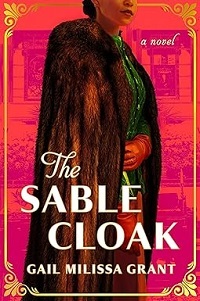
In 1940s St. Louis, at the time of Jim Crow, a powerhouse upper-class Black couple confronts a sudden tragedy; a debut based on the family history of the author, who happens to be a former diplomat. Grand Central, February 2025.
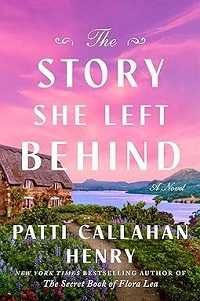
Moving between the 1920s and 1950s, Henry's latest women's fiction/mystery novel centers on a daughter seeking answers about her author mother's disappearance, as well as about the manuscript her mother left behind, one written in a language she'd invented as a child. Atria, March 2025.
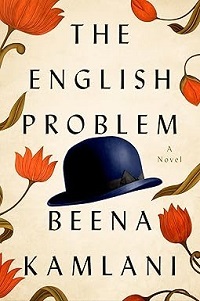
In 1931, a young Indian man is sent by Gandhi to England, where he's meant to get a legal education to help his country's independence movement, but he risks losing sight of his mission; a novel of colonialism and the desire for belonging. Crown, January 2025.
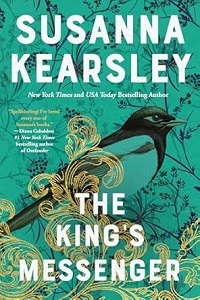
Kearsley's novels are always worth waiting for. The latest by this Canadian author focuses on political subterfuge in Scotland in Jacobean times, and centering on a royal messenger with second sight, a sense of integrity, and a duty he'd rather not fulfill. Sourcebooks Landmark, March 2025.
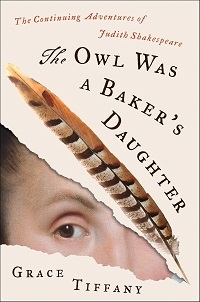
Judith Shakespeare, the title character from Tiffany's earlier My Father Had a Daughter (the twin sister of Hamnet, who died at age 11), returns in a new story; here she's sixty-one, forced out of her hometown of Stratford when she's accused of witchcraft. And thumbs up to fiction featuring older historical heroines. Harper, February 2025.
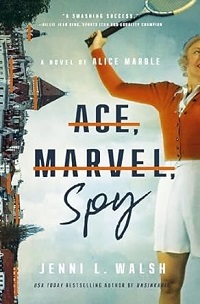
Alice Marble was an American champion tennis player. She also served as an editor for the Wonder Woman comics; as if that wasn't enough, she was asked to spy for the US on a mission overseas during WWII. Walsh brings her incredible story back into public view. Harper Muse, January 2025.
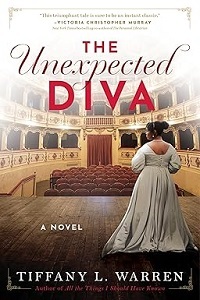
Another work of biographical fiction, this time about Elizabeth Taylor Greenfield, renowned Black American opera singer in the mid-19th century and her surprising, risky, and triumphant career path. William Morrow, January 2025.
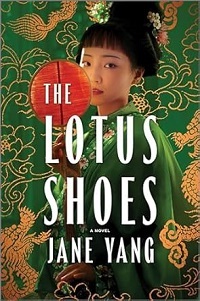
The complicated relationship between two young women in 19th-century China, as a handmaiden joining the household of a wealthy family arouses feelings of jealousy and resentment due to her exquisite embroidery skills and bound feet. Park Row, January 2025.

Five female crime writers unite to (guess what?) solve a challenging murder. You'll recognize the names of these now-famous Golden Age mystery novelists; reportedly this story was inspired by an incident in Dorothy Sayers' life. St. Martin's, January 2025.

To say I've been anticipating this one is an understatement! It also has a terrific tagline. Casati's second novel focuses on Semiramis, reigning queen in ancient Assyria, and her unlikely rise to power. The interest in mythological retellings seems to be encouraging additional novels set in the distant past, which is welcome news. Sourcebooks, January 2025.

Drastic changes on an Alabama plantation in the pre-Civil War years summon the appearance of the ghost of a young enslaved woman's older sister. Speculative historical fiction with themes of freedom, coming of age, and unexpected romance. Ballantine, February 2025.

Nicole Galland's latest takes inspiration from a historical figure, Alexander Cooke, who was a "boy player" of female roles in Shakespearean London, intertwining his story with an intellectual female friend of his, plus philosopher Francis Bacon. A theatrical, gender-swapping plot with political drama. (For another take on Cooke, see Jinny Webber's Bedtrick.) William Morrow, February 2025.

In 1940s St. Louis, at the time of Jim Crow, a powerhouse upper-class Black couple confronts a sudden tragedy; a debut based on the family history of the author, who happens to be a former diplomat. Grand Central, February 2025.

Moving between the 1920s and 1950s, Henry's latest women's fiction/mystery novel centers on a daughter seeking answers about her author mother's disappearance, as well as about the manuscript her mother left behind, one written in a language she'd invented as a child. Atria, March 2025.

In 1931, a young Indian man is sent by Gandhi to England, where he's meant to get a legal education to help his country's independence movement, but he risks losing sight of his mission; a novel of colonialism and the desire for belonging. Crown, January 2025.

Kearsley's novels are always worth waiting for. The latest by this Canadian author focuses on political subterfuge in Scotland in Jacobean times, and centering on a royal messenger with second sight, a sense of integrity, and a duty he'd rather not fulfill. Sourcebooks Landmark, March 2025.

Judith Shakespeare, the title character from Tiffany's earlier My Father Had a Daughter (the twin sister of Hamnet, who died at age 11), returns in a new story; here she's sixty-one, forced out of her hometown of Stratford when she's accused of witchcraft. And thumbs up to fiction featuring older historical heroines. Harper, February 2025.

Alice Marble was an American champion tennis player. She also served as an editor for the Wonder Woman comics; as if that wasn't enough, she was asked to spy for the US on a mission overseas during WWII. Walsh brings her incredible story back into public view. Harper Muse, January 2025.

Another work of biographical fiction, this time about Elizabeth Taylor Greenfield, renowned Black American opera singer in the mid-19th century and her surprising, risky, and triumphant career path. William Morrow, January 2025.

The complicated relationship between two young women in 19th-century China, as a handmaiden joining the household of a wealthy family arouses feelings of jealousy and resentment due to her exquisite embroidery skills and bound feet. Park Row, January 2025.
Published on July 26, 2024 06:00



